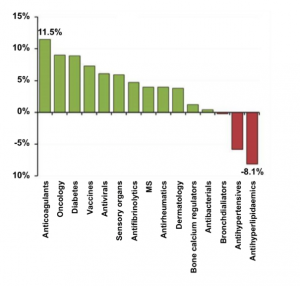By: Sarah Misenko and Chris Lowe
A case competition is an opportunity to work as a team to solve a complex, real-world business problem in a limited period of time. Emphasis is placed on identifying the main issues proposed in the case study and approaching them in a creative manner. The teams are usually made up of 2 – 5 graduate students and post-doctoral fellows. Frequently, the teams competing at case competitions are members of consulting clubs at their home university. Consulting clubs are student-run organizations for individuals interested in careers in management consulting. There are many benefits to participating in a consulting club, which include frequent meetings to solve practice cases, interview tips and practice for consulting positions, and networking opportunities with consulting experts.
If you’re interested in consulting or just want to learn more about a career in consulting, consulting clubs and case competitions are an excellent place to start. There are case competitions that occur all over the world and consulting clubs at many colleges throughout the nation. One resource to find peers interested in consulting is UVA’s website, which identifies consulting clubs throughout the east coast. Another great source for information and opportunities can be found through LinkedIn’s “PhD to Consulting” group.
The case competition my team attended was the 2015 Mid-Atlantic Case Competition held at the National Institutes of Health (NIH). The competition was hosted by the Graduate Student Consulting & Beyond Club at UVA (GSCB) and the Fellow Consulting Club at the NIH (FCC). We found out about the case competition through a graduate student mailing list at Rutgers University and couldn’t wait to apply. The application process for the competition required our team to present a cover letter that stated our interest and qualifications for applying along with a one-page resume for each member. To generate resumes that were appropriate for a consulting case, our team used advice from the SciPhD workshop about targeted resumes (you can read more about SciPhD here). A targeted resume is customized to highlight your qualifications and experiences most relevant for the purpose of the resume. For the case competition, our resumes focused on leadership, management skills, writing, and public speaking. Specifically, we highlighted the successful undergraduates we have mentored, leadership positions, advisory boards, business courses, publications, and presentations at conferences.
We were notified that our application package had earned our team a spot in the competition and we awaited the release of the case at noon on Friday. We would have to present our solution to the case on site at the NIH the following Friday morning, giving us less than a full week to prepare our strategy and presentation. The case we were assigned required us to develop a three-year plan for a pharmaceutical company, Claricure, whose top earning, multibillion dollar diabetes drug, Accitra, is scheduled to lose patent exclusivity in three years. The objective was to reallocate a portion of the company’s budget to optimize the remaining drug portfolio to ensure that total revenues did not drop more than 2% after the end of Accitra’s exclusivity expired. This was no easy task as Accitra sales accounted for 70% of the company’s total revenue and, as we learned through our market research, the influx of generic competition upon patent expiry has historically led to a loss of 80% market share for the brand name drug. There were six other drugs in the Claricure portfolio, including a cardiology drug, an oncology drug, an anticoagulant, an antibacterial drug, an HIV drug, and a contraceptive. These drugs were all in different stages of development; some were already on the market and some were still in clinical trials, and thus carried different amounts of risk. The problem statement also listed a number of other factors. Firstly, there were competing views within the company on how to reallocate funds: company executives wanted to pour as much money in Accitra as possible to maximize returns over the next three years, whereas R&D engineers were advocating investment in the pipeline drugs. As an additional factor, the oncology drug in the portfolio, which is already on the market and generating modest returns, has received interest from an oncology company who has offered to purchase the drug for 2.4 billion dollars. This would provide a large influx of cash up front which could be used to further support the development of drugs in the pipeline or to support increased marketing of Accitra over the next few years. Conversely, this would only provide 80% of the expected returns for the oncology drug over the next three years and the oncology market is rapidly growing.
To find out how our team decided to solve this case and see what we learned on competition day, come back to read part 2!
Forecast of global pharmaceutical sales in percent growth for the next 4 years (2015-2019).